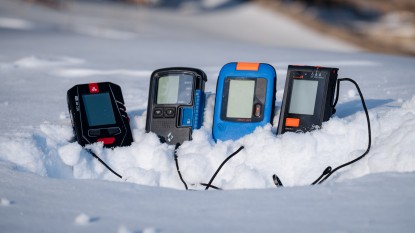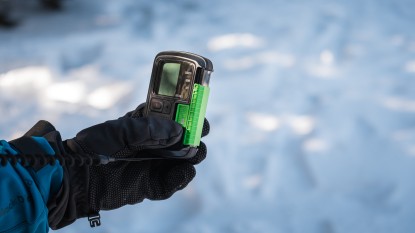Ortovox F1 Review
Our Verdict
Our Analysis and Test Results
The Ortovox F1 is a single antenna beacon. As a result there is more power going to one antenna and thus the F1 has the best range in the review (80 meters). The reduction in range with digital beacons seemed shocking at the time. Imagine all beacons going from 70 or 90 meters down to 30 meters. The other huge advantage, besides range, of the F1 is battery life. The F1 has 50-100 percent more battery life than most other beacons on the market. Why, with these two big advantages, do very few people use analog beacons? Well, the digital beacons are just so much easier and faster to use, thus you are more likely to find your victim alive.
DislikesThis beacon takes a lot of practice to use. It does work but to be proficient with the F1 takes a lot more energy. For example, one of our testers is a seasoned avalanche instructor who learned on an F1 and still practices with it to teach folks who still use/own them (though he uses a triple antennae model for his own use). During our side by side comparison for a single victim the seasoned instructor had about the same rescue times with average to casual users with a triple antenna beacon. In multiple burials an F1 can't keep up with multiple antennae beacons no matter how dialed in you are.
Also, with the F1 used on multiple burial scenarios there is no flag/mark feature, not even a “special button” as on the Tracker.



